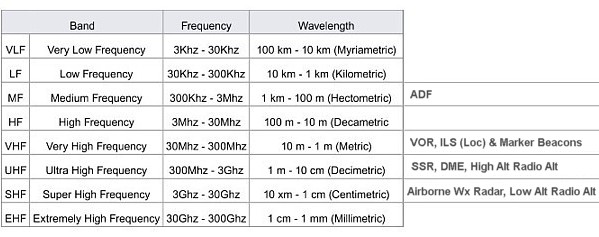

#Localizer frequency range code#
Some VOR navigation aids have an automatic voice identification announcement that provides the name of the station this alternates with the Morse code signal. The code is modulated onto the carrier wave as a 1020 Hz tone that the crew can listen to as a Morse code signal. VOR navigation aids are identified by unique three-letter codes. The Terminal VOR (TVOR) shares the frequency band with Instrument Landing System (ILS). Terminal VOR (TVOR) have 50W power with a range of 25 nautical miles. The frequency range is 112 MHz-117.95 MHz.

Out of 160 Channels 120 are allocated to En-route VOR and 40 are allocated to Terminal VOR (TVOR).Įn-route VOR have about 200W power with a range of 49 nautical miles. Hence out of the total number of channels are 200, 160 channels are allocated to VOR and remaining 40 are allocated to Instrument Landing system (ILS). VOR frequencies are allocated to even tenths of each 0.5 MHz increment, e.g. ILS frequencies are allocated to the odd tenths of each 0.5 MHz increment, e.g. W = combination of telemetry, (telephony) and telegraphy.Įach VOR operates at a frequency in the range 108–117.95 MHz with a channel spacing of 50 kHz, the first 4 MHz is shared with the instrument landing system (ILS) band.

Very High Frequency (VHF) Omni-Directional Range (VOR) is a type of short-range radio navigation system for aircraft, enabling aircraft with a receiving unit to determine its position and stay on course by receiving radio signals transmitted by a network of fixed ground radio beacons.Ī = main carrier amplitude modulated double side-band.


 0 kommentar(er)
0 kommentar(er)
